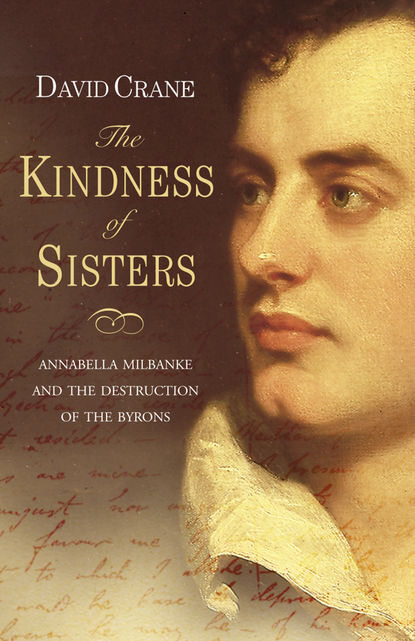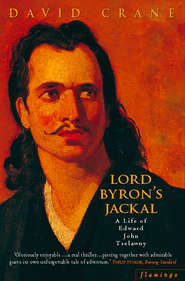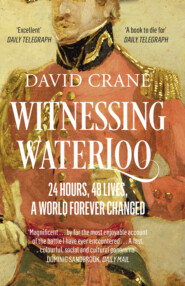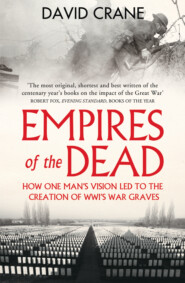По всем вопросам обращайтесь на: info@litportal.ru
(©) 2003-2024.
✖
The Kindness of Sisters: Annabella Milbanke and the Destruction of the Byrons
Настройки чтения
Размер шрифта
Высота строк
Поля
The Kindness of Sisters: Annabella Milbanke and the Destruction of the Byrons
David Crane
A groundbreaking work of Romantic biography; David Crane’s book is an astonishingly original examination of Byron, and a radical approach to biography.Crane focuses on the lifelong feud between Augusta – Byron’s half-sister with whom he had a passionate affair – and Annabella, his society wife. Recreating a meeting between the two, years after Byron's death – the Romantic ‘High Noon’ – he explores the emotional and sexual truth and the human vulnerability that lie at the heart of the Byron story.‘The Kindness of Sisters’ is not only rigorous in its scholarship, but also superbly compelling drama. Crane’s book combines passion, revenge and recrimination in 19th-century Britain with all the intensity of a Greek tragedy.Note that it has not been possible to include the same picture content that appeared in the original print version.
THE KINDNESS OF SISTERS
Annabella Milbanke and the Destruction of the Byrons
DAVID CRANE
CONTENTS
Cover (#uf4dead8b-8139-58bc-bbff-9bd005f84999)
Title Page (#u518cb052-c622-50c2-87fd-fcbb67b83cd3)
Prologue (#u6b764b4f-1f66-5004-91be-656d9a5b650c)
I A Meeting of Opposites (#uccedd089-28f4-508f-91f5-a44bc6202914)
II The Meeting (#uf66798f2-0002-50dc-9d3f-78368b026554)
III A Sense of Failure (#litres_trial_promo)
Marriage (#litres_trial_promo)
Sleeping With the Vampire (#litres_trial_promo)
The Kindness of Sisters (#litres_trial_promo)
An Instrument of Destruction (#litres_trial_promo)
The End of the Affair (#litres_trial_promo)
A Preparation for Invisibilty (#litres_trial_promo)
Epilogue (#litres_trial_promo)
Endnotes (#litres_trial_promo)
Select Bibliography (#litres_trial_promo)
Index (#litres_trial_promo)
Acknowledgements (#litres_trial_promo)
About the Author (#litres_trial_promo)
Other Works (#litres_trial_promo)
Copyright (#litres_trial_promo)
About the Publisher (#litres_trial_promo)
PROLOGUE (#ulink_19782fd0-bc16-5800-b413-b714197e9b45)
The glory of mankind has been to produce lives, to provide vivid, independent, individual men, not buildings or engineering works or art, not even the public good.
D. H. Lawrence
(#litres_trial_promo)
You should not have warred with the World – it will not do – it is too strong always for any individual.
Madame de Stael to Byron
(#litres_trial_promo)
In the late afternoon of 15 June 1938, a small group of men stood at a gaping hole at the south-west corner of the chancel of St Mary Magdalen, Hucknall. Beneath their feet a short flight of steps led down to a low, cramped vault, and by the glare of a photographer’s lamp they could make out a pile of coffins heaped on top of each other in a mouldering jumble of wood and bone and twisted lead that had lain undisturbed for over fifty years.
They had converged on the church in some secrecy. Earlier in the day a lorry had brought builders’ tools and planks to the north door, and one by one through the afternoon a surveyor, antiquarian and doctor had appeared. Finally a mason and three labourers arrived and began lifting the massive, cracked slab of York stone that now lay beside the open crypt.
It took them two hours to raise the stone, but by six o’clock in the evening it was done. During the course of the work there were other visitors in the church, but once the vault was open most of these, and all the women, were asked to leave.
Even by English standards, those who remained were a curiously prosaic lot to be indulging a taste in literary necrophilia. There was clearly a generous streak of romance in the character of Canon Barber, the Vicar of Hucknall, but if a brace of churchwardens and half the professional classes of the county were not ballast enough to steady the most extravagant imagination, he had also co-opted the Diocesan Surveyor and local MP in a bid for respectability.
A miner’s lamp was swung into the vault to test the air, a ladder lowered to avoid the shallow, awkward steps, and Canon Barber climbed down, followed in turn by the surveyor, photographer and antiquarian. The purpose of the meeting, if the Canon is to be believed, was to establish the existence of a lost medieval crypt, and although it was soon plain that any such hopes were misplaced, measurements were duly taken and recorded, leaving the way clear for the real, if unacknowledged, business of the day.
The labourers were dismissed until the next morning, and the party adjourned to the church hall, only returning at the dead of night. Again, Canon Barber was the first down. Alone in the vault, lit now only by the photographer’s lamps, he had time for a more careful inspection. It was a cramped, rectangular chamber six feet wide, just over seven feet long, and no more than eight feet beneath the floor of the nave. Its walls were of plastered brick, with two sloping slabs of stone making the vaulted roof. In three piles, running north to south rested the more or less intact shells of about half a dozen coffins, with the crushed debris of others beneath them. Round his feet lay the dust and bones of three centuries.
There seemed to be no order to anything. At the foot of the stairs, though, he identified the seventeenth century coffin of a baby, its lead lining buckled and twisted under the weight of a double-cube funerary chest, to which scraps of faded purple velvet still clung. On the lid was a brass plate with the following inscription:
Within the Urnare depositedthe heart and the brainof the deceasedLord Noel Byron
The lid was loose, and inside was a sealed lead case, with a second inscription adding an oddly casual ‘etc’ to the contents of the urn. Beyond the chest, Barber could now distinguish more easily the coffin for which he was searching. It was made of well-preserved oak and ornately decorated. Further shreds of purple material – faded since to crimson – clung to the brass headed coffin nails. On the lid rested the remains of a Baron’s coronet. The velvet and ermine had rotted away, and the pearls had been wrenched from their finials. Only the simple rim survived to identify the rank and probable identity of the dead.
There was no coffin plate to confirm Barber’s guess, but the lid was loose and he could see that the lead casing had already been cut open. ‘Somebody’, he recalled with an endearing disingenuousness, ‘had deliberately opened the coffin.
A horrible thought came over me that souvenirs might have been taken from the coffin. The idea was revolting, but I could not dismiss it. Had the body itself been removed? Terrible thought! From time to time visitors to the church had asserted in my hearing that the body of the Poet was not in the Vault. I wondered now on what ground this assertion could have been made. Had they known of the opening of the coffin, and received some secret information that the body had been removed? The more I thought about it, the more fearful I became of the possibility of the coffin being empty. There was the coffin before me – the lid was loose and easily raised – the leaden case within torn open. Within the case was another coffin of wood – the lid had never been fastened. What was beneath it? If I raised it, what should I discover? Dare I look within? Yes, the world should know the truth – that the body of the great poet was there – or that the coffin was empty. Reverently, very reverently, I raised the lid, and before my eyes there lay the embalmed body of Byron in as perfect a condition as when it was placed in the coffin one hundred and fourteen years ago. His features and hair were easily recognisable from the portraits with which I was so familiar. The serene, almost happy expression on his face made a profound impression upon me. The feet and ankles were uncovered, and I was able to establish the fact that his lameness had been that of the right foot. But enough – I gently lowered the lid of the coffin and as I did so, breathed a prayer for the peace of his soul.
(#litres_trial_promo)
‘Close thy Byron and open thy Goethe’, that renegade Byronist Thomas Carlyle demanded in Sartor Resartus, but Barber’s vandalism is only the most literal example of England’s refusal to bend to the Sage of Ecclefechan. From the moment in July 1824 when Byron’s black servant struggled for one last view of his master’s coffin as it was lowered into the Hucknall vault, a defiant nation has shared his reluctance to let its most notorious poet go, a complex mix of curiosity and guilt driving it to re-stake its claim in the man it had once forced into exile.
It is as hard to exaggerate the impact of Byron’s death on England as it is that of his life. In the orthodox histories of the nineteenth century the two seminal figures of his age are Coleridge and Bentham, but both men were pre-eminently ‘sires of sires’, their influence disseminated through disciples until it was simply part of the zeitgeist – lived and breathed by men and women who would have been hard pressed to identify the source of their beliefs.
With Byron it is the opposite, and there is in this sense no English writer like him, no one who has stamped his image so firmly on the phenomenon that bears his name, no one who has so completely made his life the measure of his art. It is difficult to imagine that anybody in their right mind has ever allowed a dislike of Wordsworth to stand in the way of his Prelude for instance, but from the first triumph of Childe Harold, Byron and his art have been inseparable, his personality and life validating or threatening the poetry in ways that have no obvious parallel. ‘We shall, like all others who say anything about Lord Byron’, Blackwood’s declared,
begin, sans apologie, with his personal character. This is the great object of attack, the constant theme of open vituperation to one set, and the established mark for all the petty but deadly sneers, shrugs, groans to another … Is there a noble sentiment, a lofty thought, a sublime conception in the book? ‘Ah yes!’ is the answer. ‘But what of that? It is only the roué Byron that speaks!’ Is a kind, a generous action of the man mentioned? ‘Yes, yes!’ comments the sage; ‘but only remember the atrocities of “Don Juan”.’ Salvation is thus shut out at either entrance: the poet damns the man, and the man the poet.
David Crane
A groundbreaking work of Romantic biography; David Crane’s book is an astonishingly original examination of Byron, and a radical approach to biography.Crane focuses on the lifelong feud between Augusta – Byron’s half-sister with whom he had a passionate affair – and Annabella, his society wife. Recreating a meeting between the two, years after Byron's death – the Romantic ‘High Noon’ – he explores the emotional and sexual truth and the human vulnerability that lie at the heart of the Byron story.‘The Kindness of Sisters’ is not only rigorous in its scholarship, but also superbly compelling drama. Crane’s book combines passion, revenge and recrimination in 19th-century Britain with all the intensity of a Greek tragedy.Note that it has not been possible to include the same picture content that appeared in the original print version.
THE KINDNESS OF SISTERS
Annabella Milbanke and the Destruction of the Byrons
DAVID CRANE
CONTENTS
Cover (#uf4dead8b-8139-58bc-bbff-9bd005f84999)
Title Page (#u518cb052-c622-50c2-87fd-fcbb67b83cd3)
Prologue (#u6b764b4f-1f66-5004-91be-656d9a5b650c)
I A Meeting of Opposites (#uccedd089-28f4-508f-91f5-a44bc6202914)
II The Meeting (#uf66798f2-0002-50dc-9d3f-78368b026554)
III A Sense of Failure (#litres_trial_promo)
Marriage (#litres_trial_promo)
Sleeping With the Vampire (#litres_trial_promo)
The Kindness of Sisters (#litres_trial_promo)
An Instrument of Destruction (#litres_trial_promo)
The End of the Affair (#litres_trial_promo)
A Preparation for Invisibilty (#litres_trial_promo)
Epilogue (#litres_trial_promo)
Endnotes (#litres_trial_promo)
Select Bibliography (#litres_trial_promo)
Index (#litres_trial_promo)
Acknowledgements (#litres_trial_promo)
About the Author (#litres_trial_promo)
Other Works (#litres_trial_promo)
Copyright (#litres_trial_promo)
About the Publisher (#litres_trial_promo)
PROLOGUE (#ulink_19782fd0-bc16-5800-b413-b714197e9b45)
The glory of mankind has been to produce lives, to provide vivid, independent, individual men, not buildings or engineering works or art, not even the public good.
D. H. Lawrence
(#litres_trial_promo)
You should not have warred with the World – it will not do – it is too strong always for any individual.
Madame de Stael to Byron
(#litres_trial_promo)
In the late afternoon of 15 June 1938, a small group of men stood at a gaping hole at the south-west corner of the chancel of St Mary Magdalen, Hucknall. Beneath their feet a short flight of steps led down to a low, cramped vault, and by the glare of a photographer’s lamp they could make out a pile of coffins heaped on top of each other in a mouldering jumble of wood and bone and twisted lead that had lain undisturbed for over fifty years.
They had converged on the church in some secrecy. Earlier in the day a lorry had brought builders’ tools and planks to the north door, and one by one through the afternoon a surveyor, antiquarian and doctor had appeared. Finally a mason and three labourers arrived and began lifting the massive, cracked slab of York stone that now lay beside the open crypt.
It took them two hours to raise the stone, but by six o’clock in the evening it was done. During the course of the work there were other visitors in the church, but once the vault was open most of these, and all the women, were asked to leave.
Even by English standards, those who remained were a curiously prosaic lot to be indulging a taste in literary necrophilia. There was clearly a generous streak of romance in the character of Canon Barber, the Vicar of Hucknall, but if a brace of churchwardens and half the professional classes of the county were not ballast enough to steady the most extravagant imagination, he had also co-opted the Diocesan Surveyor and local MP in a bid for respectability.
A miner’s lamp was swung into the vault to test the air, a ladder lowered to avoid the shallow, awkward steps, and Canon Barber climbed down, followed in turn by the surveyor, photographer and antiquarian. The purpose of the meeting, if the Canon is to be believed, was to establish the existence of a lost medieval crypt, and although it was soon plain that any such hopes were misplaced, measurements were duly taken and recorded, leaving the way clear for the real, if unacknowledged, business of the day.
The labourers were dismissed until the next morning, and the party adjourned to the church hall, only returning at the dead of night. Again, Canon Barber was the first down. Alone in the vault, lit now only by the photographer’s lamps, he had time for a more careful inspection. It was a cramped, rectangular chamber six feet wide, just over seven feet long, and no more than eight feet beneath the floor of the nave. Its walls were of plastered brick, with two sloping slabs of stone making the vaulted roof. In three piles, running north to south rested the more or less intact shells of about half a dozen coffins, with the crushed debris of others beneath them. Round his feet lay the dust and bones of three centuries.
There seemed to be no order to anything. At the foot of the stairs, though, he identified the seventeenth century coffin of a baby, its lead lining buckled and twisted under the weight of a double-cube funerary chest, to which scraps of faded purple velvet still clung. On the lid was a brass plate with the following inscription:
Within the Urnare depositedthe heart and the brainof the deceasedLord Noel Byron
The lid was loose, and inside was a sealed lead case, with a second inscription adding an oddly casual ‘etc’ to the contents of the urn. Beyond the chest, Barber could now distinguish more easily the coffin for which he was searching. It was made of well-preserved oak and ornately decorated. Further shreds of purple material – faded since to crimson – clung to the brass headed coffin nails. On the lid rested the remains of a Baron’s coronet. The velvet and ermine had rotted away, and the pearls had been wrenched from their finials. Only the simple rim survived to identify the rank and probable identity of the dead.
There was no coffin plate to confirm Barber’s guess, but the lid was loose and he could see that the lead casing had already been cut open. ‘Somebody’, he recalled with an endearing disingenuousness, ‘had deliberately opened the coffin.
A horrible thought came over me that souvenirs might have been taken from the coffin. The idea was revolting, but I could not dismiss it. Had the body itself been removed? Terrible thought! From time to time visitors to the church had asserted in my hearing that the body of the Poet was not in the Vault. I wondered now on what ground this assertion could have been made. Had they known of the opening of the coffin, and received some secret information that the body had been removed? The more I thought about it, the more fearful I became of the possibility of the coffin being empty. There was the coffin before me – the lid was loose and easily raised – the leaden case within torn open. Within the case was another coffin of wood – the lid had never been fastened. What was beneath it? If I raised it, what should I discover? Dare I look within? Yes, the world should know the truth – that the body of the great poet was there – or that the coffin was empty. Reverently, very reverently, I raised the lid, and before my eyes there lay the embalmed body of Byron in as perfect a condition as when it was placed in the coffin one hundred and fourteen years ago. His features and hair were easily recognisable from the portraits with which I was so familiar. The serene, almost happy expression on his face made a profound impression upon me. The feet and ankles were uncovered, and I was able to establish the fact that his lameness had been that of the right foot. But enough – I gently lowered the lid of the coffin and as I did so, breathed a prayer for the peace of his soul.
(#litres_trial_promo)
‘Close thy Byron and open thy Goethe’, that renegade Byronist Thomas Carlyle demanded in Sartor Resartus, but Barber’s vandalism is only the most literal example of England’s refusal to bend to the Sage of Ecclefechan. From the moment in July 1824 when Byron’s black servant struggled for one last view of his master’s coffin as it was lowered into the Hucknall vault, a defiant nation has shared his reluctance to let its most notorious poet go, a complex mix of curiosity and guilt driving it to re-stake its claim in the man it had once forced into exile.
It is as hard to exaggerate the impact of Byron’s death on England as it is that of his life. In the orthodox histories of the nineteenth century the two seminal figures of his age are Coleridge and Bentham, but both men were pre-eminently ‘sires of sires’, their influence disseminated through disciples until it was simply part of the zeitgeist – lived and breathed by men and women who would have been hard pressed to identify the source of their beliefs.
With Byron it is the opposite, and there is in this sense no English writer like him, no one who has stamped his image so firmly on the phenomenon that bears his name, no one who has so completely made his life the measure of his art. It is difficult to imagine that anybody in their right mind has ever allowed a dislike of Wordsworth to stand in the way of his Prelude for instance, but from the first triumph of Childe Harold, Byron and his art have been inseparable, his personality and life validating or threatening the poetry in ways that have no obvious parallel. ‘We shall, like all others who say anything about Lord Byron’, Blackwood’s declared,
begin, sans apologie, with his personal character. This is the great object of attack, the constant theme of open vituperation to one set, and the established mark for all the petty but deadly sneers, shrugs, groans to another … Is there a noble sentiment, a lofty thought, a sublime conception in the book? ‘Ah yes!’ is the answer. ‘But what of that? It is only the roué Byron that speaks!’ Is a kind, a generous action of the man mentioned? ‘Yes, yes!’ comments the sage; ‘but only remember the atrocities of “Don Juan”.’ Salvation is thus shut out at either entrance: the poet damns the man, and the man the poet.











